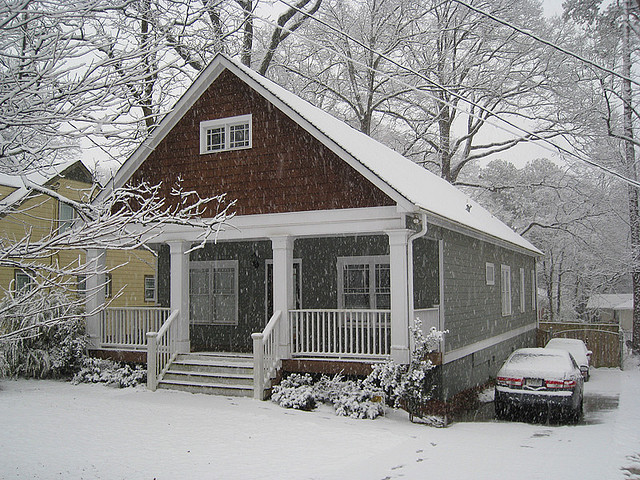The winters in Illinois can be brutal, and can take a serious toll on your home. You may not even notice the damage until spring, when the snow disappears and reveals what it has left behind. Snow and ice can cause significant water damage to your walls, ceilings, and insulation if left unchecked, which could lead to a hefty repair bill.
In order to make sure your home is protected against unnecessary damage, we’ve put together some tips for winter-proofing your home.
Know Your Trouble Areas
The most important thing to know before winter-proofing your home is areas that are particularly at risk for water damage. You don’t want water from melting snow to sneak into the home’s exterior sheathing. Areas like stucco, siding and brick are particularly vulnerable to seeping water damage. Once the water gets into these areas, it can be difficult for it to escape, and repeated wetting and drying can lead to rotting out the wood framing. Carefully inspect your home’s exterior for areas into which water can seep, and make sure to keep these spots clear of snow and ice.
Keep Windows and Doors Clear
Clearing away snow and ice from around windows and doors should be a top priority. When the snow melts, the water can seep into the openings and lead to mold growth.
Remove Ice Buildup from the Roof and Gutters
Ice buildups and ridges can be a hazard as they melt, but they also present another risk. Large ice buildups can block melting snow and water from draining off the roof, causing a backup that can leak into the home. This can cause significant damage to the walls, ceilings and insulation.
Be Careful of Using Salt to Melt Ice
Keeping your steps and walkways clear is important to prevent injury, but be cautious of using rock salt to melt the ice. Salt can eat its way through concrete over time, causing it to crack. If your steps and walkways are made of concrete, look into eco-friendly alternatives that work just as well and don’t contain harmful chemicals that will react with concrete.
Keep Vents Clear
After a major snowfall, make sure to keep snow and ice away from all air vents that bring in air for your furnace and hot water tanks, as well as chimneys. Keeping these areas clear can help prevent possible carbon monoxide poisoning, which is a serious concern during the winter months when homes are more sealed-off from the environment.
With these tips, you can help keep your home safe and secure during the long winter months.

